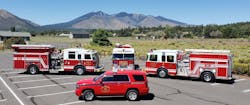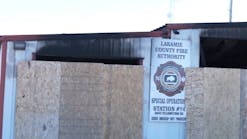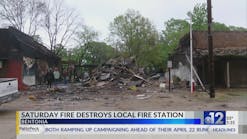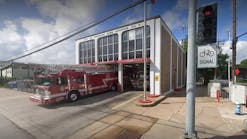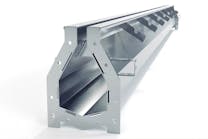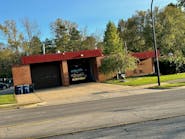Public Asked to Weigh in on AZ Station Closure
By Sierra Ferguson
Source The Arizona Daily Sun, Flagstaff (TNS)
Mar. 28—Summit Fire and Medical District will close one eastside firehouse this year, and they're asking the public to help them decide which one to keep.
There are three stations on the east side of the Summit Fire and Medical District: Station 31, on Cosnino Road; Station 32, on Koch Field Road; and Station 33, on Firehouse Lane near the Summit Fire District Maintenance building and Highway 89.
While there are three fire stations, right now there are only two Summit Fire engine companies operating on the east side. Due to budgetary constraints, in 2021, the Summit Fire Board dissolved one engine crew worth of personnel.
One of the two remaining crews has manned Station 31. Since October, the other crew has rotated between the Koch Field Road station and the firehouse near Highway 89.
Now, the fire board is looking to base that crew permanently out of either Station 32 or 33. The remaining building will be decommissioned, but not sold.
According to Flagstaff and Summit Fire Chief, Mark Gaillard, both properties will be retained by the district regardless of which one is shut down.
To find out which station the public would prefer to see operating moving forward, the board hosted a public input meeting at Cromer Elementary School on Thursday night.
"The board has a really difficult decision to make. We wanted to create a space for the public to come and weigh in on the choice that the board has," Gaillard said when the meeting opened.
According to Mark Wilson, the Administrative Deputy Chief at Summit Fire and the City of Flagstaff, public input is just one factor the board is weighing in order to decide which fire station to abandon.
The board, Wilson said, will consider response times from each base of operations. They'll also look at call density and risks to community safety in each location, and take into account facility design and community input.
An outside consultant was hired to analyze data related to costs, response times and other critical factors, offering the board a recommendation.
Instead of suggesting that one station or the other remain open, the consultant determined that the metrics were "too close to call," according to Wilson. He said the consultant determined that Station 31 is in the most appropriate spot and that the ideal location for a second station would be on Silver Saddle Road.
"I believe the right answer is to close them both. Close them both now. Get a new station built on Silver Saddle where it belongs. Fix the problem long-term," one community member said when the board sought public comment last week. "Continuing to do what we're doing, what we've been doing for the last 10 to 15 years here, has not worked. We've seen that."
The fire board, at present, is not considering building a new station on Silver Saddle Road.
The impending closure, Wilson said, comes after about a decade of budgetary challenges for the district.
In front of dozens of community members gathered at the Doney Park Elementary School, Wilson painted a picture of plunging tax revenues and rising operating costs — a picture of a fire district whose efforts to keep out of the red ultimately came up short.
In 2008, Summit Fire had $4.2 million in tax revenue to cover operating costs. By 2014, the district's tax revenue had dipped to $3.5 million.
There were a number of reasons for that, Wilson said.
In 2010, after the Schultz Fire swept through the region, property values were re-assessed and dropped to give county residents a tax break and some breathing room financially.
In 2012, Proposition 117 capped the annual increase in real property used to calculate property taxes to 5%.
"Now you can't rebound more than 5% in any given year," said Wilson. "It took us 12 years...to get back to where we were collecting the same revenue that we were collecting in 2008 to cover the cost of running a fire district."
In that time, the cost of doing business had gone up for the fire service.
"We had a deficit of two or three thousand dollars in a 10-year timeline," said Wilson. "Hard costs, costs of doing business, not salaries, including public safety retirement pensions went up 20% in that time. Our healthcare went up 40%. Our worker's comp went up 116%. Our insurance went up an additional 26%."
In an effort to keep the district afloat financially, Summit Fire and Medical District entered into an intergovernmental agreement with the City of Flagstaff. The two departments consolidated administrative roles in 2015. They agreed to share a fire chief and support one another in call response and training.
"It was a savings of about $50,000 a year to hire a new chief for Summit, compared to what the city could charge," Wilson said. "We both knew that we had deficits in our staffing and in our capacity to provide service levels. That IGA has been going on for 8 years. The City of Flagstaff has never raised the rate one dime. I assure you, the cost of those administrators has gone up, but that has been a flat rate agreement between the City and Summit, and it saved Summit a lot of money over those eight years."
If Thursday night's meeting felt like deja vu, it's because Summit has taken similarly drastic measures to cut costs before. In addition to entering the IGA with Flagstaff Fire in 2015, the board closed one of Summit's Highway 180 stations.
In later years, Summit would utilize bonds for debt consolidation, catching up on capital costs and growing pension expenses. None of those steps, presenters asserted Friday, helped to achieve fiscal stability.
"During that time we were treading water," Wilson said. "In 2021, we advised the board we could no longer tread water. The gap was starting to separate. We need to do something dramatic."
That's when the district entered what they call the "Eastside Restructure Pilot." They launched the process of shutting down a fire station.
The board cut seven firefighting positions, which Wilson said were vacated due to attrition rather than layoffs. For 18 months, the remaining firefighters that weren't assigned to Station 31 started rotating between 32 and 33, all the while gathering data.
The data was analyzed by an outside consultant, but the board didn't act on that right away. Instead, they postponed officially closing a station in hopes that Proposition 310 would pass, bolstering tax revenues.
The proposition failed, and the Summit Fire Board was left with data on both stations and a big decision to make.
On average, the national emergency response time for rural fire departments is 10 minutes. According to Wilson, when crews responded from Station 32, they arrived at their call in about 6.59 minutes on average. The average response time from Station 33 was 7.45 minutes.
Station 33 offers quick access to Highway 89. It's an older facility and the farthest north of the three stations.
The majority of speakers at Cromer Elementary School Thurday said they would prefer to see the station on Firehouse Lane station remain open.
Many of those speakers own property or live in Timberline or Fernwood — neighborhoods that have been rattled by three catastrophic wildfires in the last decade, and are now subject to devastating flooding.
"The most important reason to keep Station 33 open is that Government Tank will continue to flood during monsoon for years to come, closing Highway 89 for periods of time and putting residents, travelers on 89, recreationists, forest restoration and flood mitigation workers north of Government Tank at extreme risk when 89 is closed," said Marilyn Ruggles, who has attended fire board meetings regularly over the last 18 months.
Flagstaff Fire and the Summit crew at Station 31 would be able to respond to calls Farther south and east when the highway was closed and communities farther up 89 would still have first responders on deck, Ruggles argued.
Daniela Harrison told the fire board Thursday that she believes Station 33 is the best fit too. For one thing, it's close to a high-traffic corridor — tourists use Highway 89 to access popular sites like Grand Canyon National Park and Wupatki National Monument.
Harrison also pointed out there might be more reasons in the future to keep the northmost station.
"The hospital is going to be located outside of the city. Having EMTs that are able to reach the northern part fast...before they can get all the way up to the hospital? It's going to make a big difference," she said.
Station 32 is centrally located in the fire district, closer to Cromer Elementary School and closer to the highest volume of people and calls for service. The building itself is much newer, and Station 32 features a large bay space for equipment.
One of the primary concerns associated with the location on Koch Field, however, is its lack of a workout room. Summit Firefighters are required to work out daily, and when they're stationed at 32, they have to leave their post and work out at Station 33.
No one spoke on behalf of seeing Station 32 remain open last week.
According to Wilson, the fire board will decide the fate of one of the two buildings in April. In the meantime, they are still looking for online community feedback. A digital comment card can be filled out at summitfiredepartment.org.
Sierra Ferguson can be reached at [email protected].
___
(c)2023 The Arizona Daily Sun (Flagstaff, Ariz.)
Visit The Arizona Daily Sun (Flagstaff, Ariz.) at www.azdailysun.com
Distributed by Tribune Content Agency, LLC.
